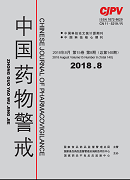|
|
Study on Toxicity of Gynura Divaricata Aqueous Extract by Gavage for 30 Days in Rats
YUE Tun, MOU Huaming, LI Jing, SHU Chaolin, WANG Lei
2018, 15(8):
449-451.
Objective To investigate the safety of Gynura divaricata aqueous extract, and to provide toxicological basis for its application. Methods 80 rats were randomly divided into 4 groups, each group was given distilled water and Gynura divaricata aqueous extract intragastrically in dose of 20, 10, 4 g·kg-1 for 30 days. Parameters examined included general condition, body weight, organ coefficient, blood cell, blood biochemistry, and histopathological examination. Results The mental state, behavioral activities, weights, blood cell, blood biochemistry, organ coefficient in rats had no significant difference by comparing with control group. The histopathological examination of heart, liver, spleen, stomach, kidney, testis, ect did not discover singificant pathological changes related to drug toxicity. Conclusion The 30 days feeding test of Gynura divaricata aqueous extract has no siginficant toxicity to rats.
References |
Related Articles |
Metrics
|
